

 In this brief we write about several wine competitions. One is very special, almost a curiosity: A competition to nominate the wine with the most successful (or best) malolactic fermentation. I wonder how you judge that. Is there something in a well made and balanced wine that indicates a particularly successful malolactic fermentation? Maybe. We wouldn’t spontaneously say about a wine: “God, what a fantastic malolactic fermentation!” But we have probably still things to learn.
In this brief we write about several wine competitions. One is very special, almost a curiosity: A competition to nominate the wine with the most successful (or best) malolactic fermentation. I wonder how you judge that. Is there something in a well made and balanced wine that indicates a particularly successful malolactic fermentation? Maybe. We wouldn’t spontaneously say about a wine: “God, what a fantastic malolactic fermentation!” But we have probably still things to learn.
Anyway, competitions are important to many wine producers. There are many around the world. Often you see stickers on bottles saying that this wine has won a gold or a silver medal in this or that competition. It means something to the consumers as well. Maybe they do not know much about the competition itself but just the fact that the wine has won a medal makes them feel a little safer when they buy the wine. Someone liked it so it can’t be that bad. So for not so well known producers taking part in competitions is part of the marketing strategy.
More famous estates and those who feel they have a reputation don’t normally take part. They have not the same need and they would probably be embarrassed if they didn’t win. When wines are tasted blind anything can happen, as they very well know.
I was glad, the other day, when I read the results of a competition for organic wines from Languedoc-Roussillon called the Signature Bio 2012. Two wines had received gold medal with a special mention. One of them was my favorite Château Pech-Latt Tradition Rouge 2011 from Corbières. Consumer price in France is 6.80 euro and the wine had won over a number of others that cost far more than that.
In the end it is your own personal taste that decides it you like a wine or not. But sometimes a little help is a good thing, whether it’s from medals, points or tasting notes.
Have a wonderful summer (if ever it arrives) with lots of reading and lots of wine!
Britt & Per
PS: Recommend to your friends to read the Brief or forward it to them!
– – – – –
What’s on at BKWine Tours
“World’s Top Wine Tours” – Travel + Leisure Magazine, on TravelAndLeisure.com
2012 wine tour program
- Bordeaux 19-23 September
- Tuscany 10-14 October
- Champagne 14-18 November
2013 wine tour program
- Chile & Argentina, 4-19 February 2013
- South Africa, 1-11 March 2013
Details soon to be published.
For more information please contact us on email or on phone (we’re on French time), or go to our wine travel site on www.bkwinetours.com!
“Many thanks for a fantastic trip. You are so keen to make everything the best for your guests and you are so knowledgeable about wine. A pleasure to travel with you.”, W-A. More wine tour customer testimonials here.
We also make custom designed wine tours – on-demand tours for you and a group of friends, for your company (maybe to scout new winegrowers?), for a special event… We can combine winery visits and wine touring with other activities: gastronomic workshops, visit to an oyster farm, truffles hunting, cheese making, and more. More info on the custom designed and bespoke BKWine wine tours and travel here!
Wine tours in Finnish: We also do wine tours in Finnish. And in German, Norwegian, Spanish…
Do you want the latest news and updates on our wine travel activity? Subscribe here! (Second alternative BKWineTours.com)
From the World of Wine
Champagne Philipponnat | BKWine Pick
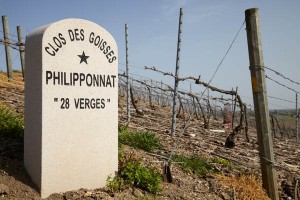 In the small village of Mareuil-sur-Aÿ a few kilometres east of Epernay, we find Champagne Philipponnat in a handsome house with a magnificent gate. Philipponnat is a small, high-quality champagne house. It owns 17 hectares of vines and buys grapes from approximately the same area to meet their needs. Around 700 000 bottles are produced annually.
In the small village of Mareuil-sur-Aÿ a few kilometres east of Epernay, we find Champagne Philipponnat in a handsome house with a magnificent gate. Philipponnat is a small, high-quality champagne house. It owns 17 hectares of vines and buys grapes from approximately the same area to meet their needs. Around 700 000 bottles are produced annually.
The house was founded in 1910 by brothers Auguste and Pierre Philipponnat and it was Pierre who in 1935 bought land from several vineyard owners and thus created Clos de Goisses, a 5 hectare walled vineyard with one of Champagne’s most exceptional locations: a steep, sunny southern slope down towards the river, a location Philipponnat is very proud of. Here the grapes ripen well thanks to the superb sun exposure. In addition, the champagne ages on its lees in the cellar for 10 years before being released. A champagne which, says director Charles Philipponnat, should be drunk with a meal, not as an aperitif. At Philipponnat they always decant it before serving.
Clos des Goisses 2000 is a powerful champagne with minerality and freshness. And a long finish. Pinot Noir dominates and there are subtle aromas of roses. Half the volume has been fermented in oak barrels which gives a good texture and richness. No malolactic fermentation. The house has recently released Clos des Goisses 2001 and 2002.
However, Philipponnat is not only Clos des Goisses. I am also fond of Grand Blanc 2005, a 100% chardonnay with a low dosage of 5 grams and the elegant and smooth Cuvée 1522, 2003, made of 60% chardonnay and 40% pinot noir.
Their site: www.philipponnat.com
Curious to discover more? We often stop for a visit, and a fabulous lunch (!), at Champagnes Philipponnat’s on our Champagne programs with BKWine Tours.
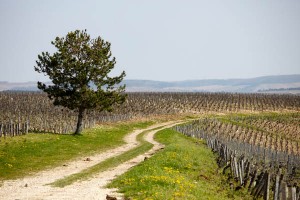 Britt’s Wine of the Month #1: Petit Chablis 2010, Domaine Sainte Claire, Jean-Marc Brocard
Britt’s Wine of the Month #1: Petit Chablis 2010, Domaine Sainte Claire, Jean-Marc Brocard
Petit Chablis 2010
Domaine Sainte Claire
Jean-Marc Brocard
Very pleasant Chablis with crispy freshness and aromas of citrus. Good length and more body than you would expect. Petit Chablis may be the lowest of the four levels in Chablis, but the wines can be, as this one here, really good.
New wine tours with BKWine: South Africa and Chile-Argentina
Both our two new wine tours have now been officially launched:
The Chile & Argentina tour includes the best of the wine regions in those two countries as well as a spectacular trip over the Andes by road. It starts in Buenos Aires and ends in Santiago de Chile. The wine tour to South Africa will take you to Stellenbosch, Franschhoek as well as some of the not so famous (but just as exciting) wine regions on the Cape. You can also add a few days luxurious wildlife safari, which we definitely recommend. Read the full details here: BKWine Tours
Britt’s Wine of the Month #2: Les Violettes 2011, Domaine Montirius, Vin de Pays de Vaucluse
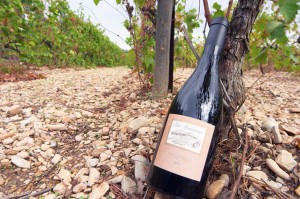 Les Violettes 2011
Les Violettes 2011
Domaine Montirius
Vin de Pays de Vaucluse
Les Violettes is a new wine from this excellent and biodynamic producer in the southern Rhone Valley. The wine is 100% syrah and has the characteristic dark blue colour of a young syrah. But according to Christine at Montirius the name actually comes from the aromas of violets you find in the wine, not from the colour.
It is a wine rich in flavours but is quite light in structure and body. The fruit is nice and clean, the hallmark of Montirius’ wines.
There’s a competition for just about everything, malolactic fermentation for example!
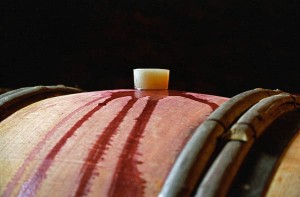 “The Lallemand Malolactic Fermentation Wine Competition 2012” – This is probably the most original wine competition that we have heard of. It was organized for the second time by chemical company Lallemand in Madrid in February this year. The idea behind the competition is to make people (wine makers) aware of the importance of controlling the malolactic fermentation. In other words: do not rely on nature for your malo. Better to add lactic bacteria (preferably bought from Lallemand!) to get it started exactly when you want it to start.
“The Lallemand Malolactic Fermentation Wine Competition 2012” – This is probably the most original wine competition that we have heard of. It was organized for the second time by chemical company Lallemand in Madrid in February this year. The idea behind the competition is to make people (wine makers) aware of the importance of controlling the malolactic fermentation. In other words: do not rely on nature for your malo. Better to add lactic bacteria (preferably bought from Lallemand!) to get it started exactly when you want it to start.
90 wines from Spain and Portugal competed. There were three categories for red wines:
1. Wines that had been co-inoculated (yeast for the alcoholic fermentation and bacteria for the malolactic are added simultaneously) and not oak aged
2. Wines that had been sequential inoculated (bacteria added after the alcoholic fermentation) and not oak aged
3. Wines that had been either sequential inoculated or co-inoculated and oak aged
The malolactic fermentation occurs thanks to lactic bacteria that transforms malic acid into lactic acid. Consequently the wine gets a bit softer and rounder in the mouth. The malolactic also stabilizes the wine.
It is not necessary to add the bacteria because you already have them in the wine. So if you like you can just let it happen naturally, by heating the tank after the alcoholic fermentation for instance. But maybe you have to wait a bit. Maybe even until spring or summer, the year after the harvest. And many wine producers are not equipped with that sort of patience.
Read more about the competition here: www.lallemandwine.com
Time to spend in Porto? Five hours on foot, then you deserve a glass of Quinta do Tedo!
Kay Steffey Bouchard at Quinta do Tedo in the Douro Valley writes an interesting blog about the life and the work at the quinta (the winery and vineyard) run by herself and her French husband Vincent Bouchard. Recently she shared with her readers her “addiction” to walking and she suggests a 5 hour walk in the city of Oporto. This walk includes some lovely views of the Atlantic Ocean.
Oporto (or Porto if you prefer) is a fantastic city to discover on foot and wherever you go, a glass of port is never far away. And if you are lucky you may even find a glass of Quinta do Tedo. We also suggest that you cross the river Douro and do some sight seeing on the other side, in the town of Vila Nova de Gaia.
Read more on our Travelog travel blog, including quite a few picture from Porto and Tedo: Five hours on foot in Porto, then you deserve a glass of Quinta do Tedo!
(Tedo is also one of the vineyards that we often visit on our Douro Valley wine tours.)
Sicily has an incredible range (and quality) of wine and food
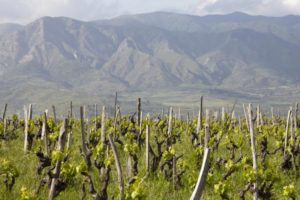 “Sicily is like a whole continent in one small island”, but I am not sure who is the origin of the expression. It was certainly what we thought when we were travelling there to explore the vineyards and the wineries some time ago. Apparently it is also what Sally Easton MW thinks. Some time ago she published an interesting article on the Italian island called, well, “Sicily, a continent on one island”.
“Sicily is like a whole continent in one small island”, but I am not sure who is the origin of the expression. It was certainly what we thought when we were travelling there to explore the vineyards and the wineries some time ago. Apparently it is also what Sally Easton MW thinks. Some time ago she published an interesting article on the Italian island called, well, “Sicily, a continent on one island”.
There are many different soil types, or terroirs, or Sicily, very different climates, many grape varieties. Even the heat will vary a lot although it is always more or less scorching in summer. It will be very different in the vineyards on the slopes of Etna, up to almost 1000 metres in altitude, and by the sea. Read more on our Travelog travel blog: Sicily is like a continent in one small island
(Our next wine tour to Sicily will be in November)
Château Saint Jacques d’Albas, Minervois, Languedoc | BKWine Pick
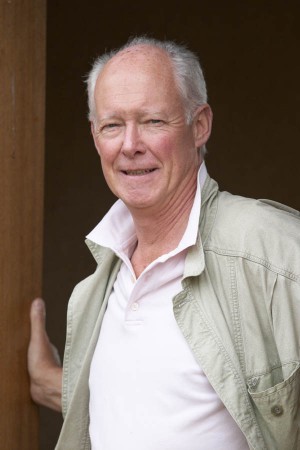 Château St Jacques d’Albas in Laure-Minervois is run by Englishman Graham Nutter and his French wife Beatrice. They came here a few years ago, “when everything was in ruins” and now they have a beautifully renovated 80-hectare estate in the heart of Languedoc.
Château St Jacques d’Albas in Laure-Minervois is run by Englishman Graham Nutter and his French wife Beatrice. They came here a few years ago, “when everything was in ruins” and now they have a beautifully renovated 80-hectare estate in the heart of Languedoc.
We first got in touch with Graham about five years ago and since then we have regularly visited the estate and tasted the wines. We liked the wines from the beginning and over the years they have improved even more.
I like the balance in the wines, the clean and fresh fruit and the refreshing acidity. They are quite light and elegant in the body but with complex flavors. This is the kind of wine that Graham wants to make. Wines to go with food, wines that are not too heavy.
He points out well that the cooling system was one of his most important investments. “In a climate that often gives us 35 degrees during the harvest in September it is an indispensable tool”, he says, “and one reason that we can make high quality rosé wines.”
And his rosé is really good. It’s a syrah-grenache blend with a tiny bit of mourvèdre which is fermented at cool temperature. A structured and dry rosé that smells of summer fruits and roses.
Here is their web site: www.chateaustjacques.com
Video:
We also have a video interview with Graham where he talks about how it started and what he does.
COS, a famous wine producer in Sicily with amphora and cow horns
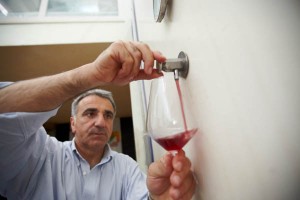 “The vineyard is our bank savings so we must protect it,” says Giusto Occhipinti at COS winery in Sicily. He founded COS with two friends in the early 1980′s and now runs it together with his daughter Arianna Occhipinti.
“The vineyard is our bank savings so we must protect it,” says Giusto Occhipinti at COS winery in Sicily. He founded COS with two friends in the early 1980′s and now runs it together with his daughter Arianna Occhipinti.
COS is located in the southeast of Sicily, 10 kilometres from the town of Vittoria. The total vineyard area includes a little short of 30 hectares of vines. The soil diversity is important but all over the vineyard the soil is poor and limestone is mostly found 30-60 centimetres down into the ground, under a layer of red clay. But although the soil is poor, he never adds anything to nourish it, not even organic fertilizers. “If you do”, he says, “you change the terroir.” Read more here: COS – biodynamics and amphora in Sicily
Britt’s Olive of the Month: Lucques
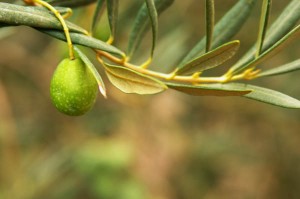 I could not help but to nominate an “olive of the month” after having tasted the green olive “Lucques” by the cooperative L’Oulibo in Bize-Minervois. Lucques has a characteristic, elongated shape and should preferably be enjoyed au naturel, with nothing added but water and salt. This way you really feel the flavours of the olive. The taste is a bit green and sweet, the texture crunchy and meaty.
I could not help but to nominate an “olive of the month” after having tasted the green olive “Lucques” by the cooperative L’Oulibo in Bize-Minervois. Lucques has a characteristic, elongated shape and should preferably be enjoyed au naturel, with nothing added but water and salt. This way you really feel the flavours of the olive. The taste is a bit green and sweet, the texture crunchy and meaty.
Lucques is grown exclusively in the Languedoc and it is above all a table olive. And it is mostly eaten green. Oil is pretty hard to extract from Lucques so not a lot is made. L’Oulibo only makes 2000 litres a year of exclusive Lucques olive oil.
Try Lucques with a white Languedoc wine.
Read more here www.odyssea.eu
Cool flowering causes coulure in the vineyards
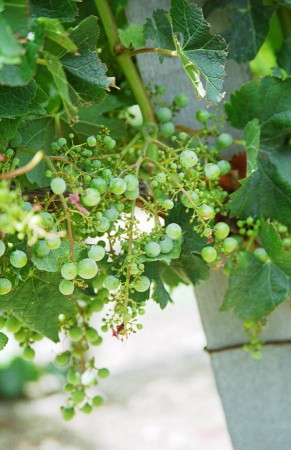 After a hard winter the wine growers had hoped for a nice spring and early summer. But instead, diseases have spread in the vineyards. La Vigne informs about cool and rainy weather during flowering, which has caused the disease coulure in several places, for instance in the Côte d’Or in Burgundy, Alsace and Bordeaux.
After a hard winter the wine growers had hoped for a nice spring and early summer. But instead, diseases have spread in the vineyards. La Vigne informs about cool and rainy weather during flowering, which has caused the disease coulure in several places, for instance in the Côte d’Or in Burgundy, Alsace and Bordeaux.
Coulure gives an uneven flowering which may affect the harvest quantity. In Alsace, the grape affected is mainly muscat. In Bordeaux, the flowering was very slow and heterogeneous.
“Sustainable” and “Fair Trade” is not as simple as it can seem. What is it and does it make sense at all?
“Sustainable” is actually quite a curious terminology. Not least for wine. Sometimes it is used as some kind of “super category” embracing everything that is organic, environmentally friendly and sometimes even “ethical”. At other occasions it is used to describe a more narrow type of work practices that take into consideration the environmental effect of things, and yet in other contexts it can be uses for things that don’t fit comfortably into any other category (e.g. “organic”).
“Fair Trade” is also quite vague but in a different way. Usually it has to do with that you pay a certain minimum level of wages, offer good working conditions, do not use child labour etc. Both sustainable and fair trade is often in a knee-jerk reaction seen as something positive, but that is not necessarily the case. The question is not so simple that a certain label is always ethically better. Read more here: Sustainable” and “Fair Trade”. What is it? Does it make sense?
Organic wines even in Champagne: from Champagne Benoît Marguet in Ambonnay
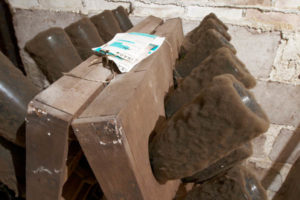 Benoit is one of many extremely interesting small producers in Champagne. He is the kind of producer that you rarely find, unless you know exactly where to go. Benoît also belongs to the small number of growers in the region that have started to grow vines organically. He has actually been doing it for a while and will get his certification this year. He has around 10 hectares of vineyards mainly in Ambonnay and Bouzy. This is actually quite a lot in this area; his neighbours are more likely to have between 3 and 5 hectares.
Benoit is one of many extremely interesting small producers in Champagne. He is the kind of producer that you rarely find, unless you know exactly where to go. Benoît also belongs to the small number of growers in the region that have started to grow vines organically. He has actually been doing it for a while and will get his certification this year. He has around 10 hectares of vineyards mainly in Ambonnay and Bouzy. This is actually quite a lot in this area; his neighbours are more likely to have between 3 and 5 hectares.
We met Benoit recently during a wine tour in the Champagne region, with a small group of wine enthusiasts, and he showed us one of his Bouzy vineyards. Read more on our Travelog travel blog: Champagne Benoit Marguet, organic farming and horse ploughing in Ambonnay
This autumn we have three wine tours to Champagne, one of which is on our open scheduled program.
Screwcap is of course much better, isn’t it? No, it is not that simple as we discover in Bardolino
When we do our wine tours in Veneto (with amarone, Valpolicella etc) we often make a small detour to Bardolino, the wine region on the eastern shore of the Garda Lake in the Vento region in north-eastern Italy.
When we come here we often make a stop at a place run by a not very big but very determined lady who’s name is Matilde Poggi. She owns and runs the Le Fraghe winery. Matilde sometimes pulls out some surprises for us and lately she has done a very interesting tasting to compare a wine in a bottle closed with natural cork and in one closed with screw cap. We taste the wine blind of course. Is there a difference? Beforehand one can easily be convinced that one is better than the other, but what happens if you are served to wines blind, identical wines from the same tank but one sealed with Screwcap and the other with natural cork? Interesting questions!
Read about the results in our Travelog travel blog: A signora with style, a rosé wine and two types of corks in Bardolino
Downy mildew attacks Burgundy
Coulure has been a problem in the French vineyards this year. But a bigger problem is probably the downy mildew. According to La Vigne, the mildew attacks started early this year in Burgundy, already at the beginning of the flowering. The reason is the wet spring in Burgundy. It rained 300 mm in April and May, which is a lot for only two months, and the rainy weather continued in June, so providing perfect conditions for downy mildew.
To protect the vines the growers are treating their vineyards with copper and other chemical products. There have been a lot of passages with the tractors already. The organic growers are only allowed to use copper to fight downy mildew and they worry that they might be forced to use more copper than they are allowed according to the organic rules. They are allowed to use, per year, 6 kilo of copper per hectare. But they can use more during a difficult year (maybe this one?) if, within a five year period they do not exceed 30 kilo per hectare.
Let us hope for sunny weather now that the summer heat it coming or else there is probably also risk of powdery mildew attacks. The life of a wine grower is not all a bed of roses.
Here are our beautiful “Best Wine Book in the World” awards framed
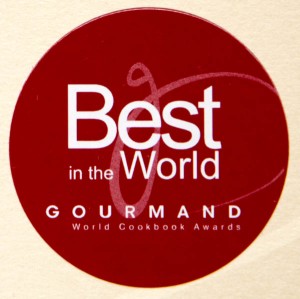 We have not shared the beautiful pictures of it before, but we have mentioned it (I think even several times). Our last book, The Creation of a Wine (Ett vin blir till, in Swedish) first won the prize in Sweden as Best Wine Book of the Year 2010.
We have not shared the beautiful pictures of it before, but we have mentioned it (I think even several times). Our last book, The Creation of a Wine (Ett vin blir till, in Swedish) first won the prize in Sweden as Best Wine Book of the Year 2010.
We were very happy with that of course, especially since it was rather an ambitious book with lots of text (almost 300 pages) and also a lot of sometimes technical pictures. Not at all a glossy coffee table book. Rather a serious, informative, almost education type of book.
It then went on to win a prize in the Gourmand World Cookbook Awards as The Best Wine Book in the World for Professionals 2010. All this made us immensely proud. We even received two nice-looking certificates.
Read more and see them here: Our “Best Wine Book” prize certificates.
Hard winter kills vines in the Rhône Valley
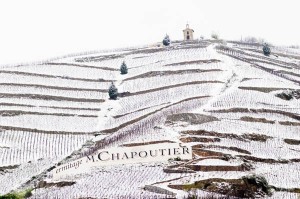 This winter was harsh in many parts of France. The vines can handle quite cold temperatures in winter time and it is rare that it gets so cold in France that they do not survive. But now, announces La Vigne, the producers in the Côte-du-Rhone have established that 20 million vines froze to death last winter. This corresponds to a total of approximately 5000 hectares as the planting density is around 4000 plants per hectare. It is an area as big as Chablis so it is quite substantial.
This winter was harsh in many parts of France. The vines can handle quite cold temperatures in winter time and it is rare that it gets so cold in France that they do not survive. But now, announces La Vigne, the producers in the Côte-du-Rhone have established that 20 million vines froze to death last winter. This corresponds to a total of approximately 5000 hectares as the planting density is around 4000 plants per hectare. It is an area as big as Chablis so it is quite substantial.
41% of the vines were over 50 years old and it was mainly grenache that was affected.
Hopefully they will replant with grenache as well. Grenache is a wonderful grape variety, extremely well suited for the southern Rhône Valley (well, except for cold winters, but hopefully this winter was not the start of a new trend).
No more subsidies for enrichment
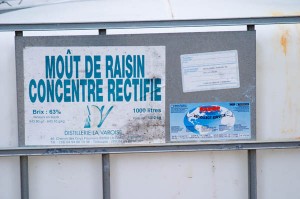 Confédération française des vins de pays (CFVDP, an association for French Vin de Pays-producers) had a congress earlier this June and they discussed among other things the discontinuing of subsidies to enrich wines with concentrated grape must (MCR).
Confédération française des vins de pays (CFVDP, an association for French Vin de Pays-producers) had a congress earlier this June and they discussed among other things the discontinuing of subsidies to enrich wines with concentrated grape must (MCR).
La Vigne reports that CFVDP are against the subsidies being discontinued (big surprise…) and that it finds it difficult to accept the suggestions given by the French authorities, to switch to a cheaper alternative, that is chaptalisation with sugar. In southern France, according to CFVDP, they do not like chaptalisation.
Fine. Then do not chaptalise. And do not enrich with MCR if you cannot afford it. Because the obvious question is: why do these producers have to enrich their wines, be it with beet sugar or concentrated grape must? Over 80% of all French vin de pays (now IGP) is in the Languedoc-Roussillon region, thus in a region that is normally warm enough to give grapes with enough natural sugar. And also, nowadays consumers are increasingly looking for wines with a reasonable or even low alcohol level. Enrichment in southern France should not be allowed and come to think of it, it should not be allowed anywhere at all.
Top class lunches at wine estates
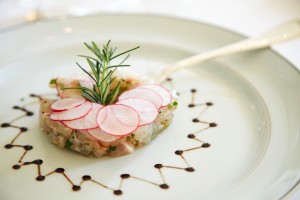 One of the best things with our wine tours is the meals! (Well, and the wines of course!) On all our tour programs the food and gastronomy almost automatically get a very prominent place. We put a lot of effort into planning excellent and typical meals that showcase the local gastronomy.
One of the best things with our wine tours is the meals! (Well, and the wines of course!) On all our tour programs the food and gastronomy almost automatically get a very prominent place. We put a lot of effort into planning excellent and typical meals that showcase the local gastronomy.
Sometimes, quite often, it is essentially top-class luxury meals. Take for example the lunch in the garden of the 15th century Castello of the Marchesi Fumanelli that he treated us to earlier this spring. Or the fantastic champagne lunch at Champagne Duval-Leroy with vintages from magnums. And the fabulous haute cuisine lunch at Château Phelan-Ségur in Saint Estèphe.
But a change is always welcome so sometimes it is more “rustic”, but typical country fare. Or it could be a pick-nick in the vineyard (well, not sure we can call it pick nick but we were at least sitting in the garden).
Read more about some of our lunches, visits and what some of our customers are saying in our Travelog travel blog, with lots of pictures (yes, all our pictures are from BKWine wine tours; honest, it’s true!):
- “Fantastic culinary experiences!” with the Marchese and others
- An opulent lunch at Champagne Duval-Leroy
- A day in the Medoc: wine, food and Phelan Segur
- “A wonderful experience with excellent food and wine, and good company!”
- “An absolutely wonderful wine tour!”
The best rosé comes from Provence – yes or no?
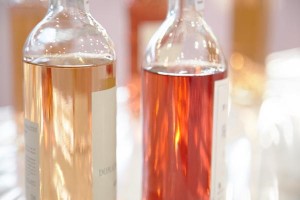 Rosé – the Provence speciality: People drink rosé in the summer, preferably well chilled and sitting on a shaded terrace overlooking the Mediterranean. What is in your glass is really not that important. This is the stereotype view of rosé wine but not always true anymore for rosé wines can now be excellent food wines and enjoyable without a view of the Mediterranean. But is has to be a good rosé. And a good rosé is not made by the method called saignée (bleeding). At least according to François Millo in the Drinks Business.
Rosé – the Provence speciality: People drink rosé in the summer, preferably well chilled and sitting on a shaded terrace overlooking the Mediterranean. What is in your glass is really not that important. This is the stereotype view of rosé wine but not always true anymore for rosé wines can now be excellent food wines and enjoyable without a view of the Mediterranean. But is has to be a good rosé. And a good rosé is not made by the method called saignée (bleeding). At least according to François Millo in the Drinks Business.
François Millo is the president of CIVP (Comité Interprofessionnel des Vins de Provence) and he believes that producers using the saignée method really makes a red wine and then accidentally they produce a rosé wine as a by-product. The saignée method means that you start making a red wine and after a certain time you draw off a certain amount of juice from the tank. This juice is fermented separately and turned into a rosé wine. The red wine that remains in the tank gets a bit more concentrated.
In Provence they rarely use this method. Which is not that surprising. 85% of the wines produced in Provence is rosé so it is by far the most important product. So naturally they have rosé wines in mind when determining for instance the harvest date. This is important because grapes for rosé are usually harvested a little earlier than grapes for red wines.
In Provence they want their rosé wines as pale as possible. This is achieved with only a short period of skin contact. In fact, sometimes Provence rosé is so pale that you almost believe that you are drinking a white wine.
Allergic to wine? New labelling rules
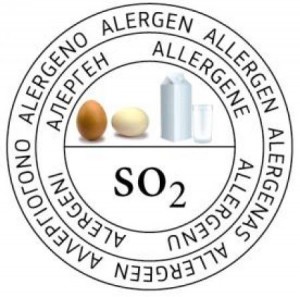 From this year EU countries as well as Canada require that wine labels provide information about contents in the wine that can cause allergic reactions. It is already compulsory to mention on the label that the wine contains sulphur (if it contains more than 10 mg/litre). The new substances that have to be mentioned are egg and milk products. Products containing these substances are sometimes used to clarify the wine.
From this year EU countries as well as Canada require that wine labels provide information about contents in the wine that can cause allergic reactions. It is already compulsory to mention on the label that the wine contains sulphur (if it contains more than 10 mg/litre). The new substances that have to be mentioned are egg and milk products. Products containing these substances are sometimes used to clarify the wine.
In the EU the new law comes into force on June 30 this year. Starting from the harvest 2012 you must specify on the label “contains products of egg/milk” if the wine has been clarified by any of these products (albumin, casein etc). At first it seemed that the rule would apply regardless of whether there remained traces of the substances in the wine or not. But apparently the EU now agrees with Canada. Which means that only those wines that have been clarified with an egg och milk product and contain traces of these products have to specify it on the label. The official report will soon be published and we will get back with a confirmation.
Most producers clarify their wines, and often with these products. There is however a certain trend among quality conscious small growers to avoid clarifying. Normally there is nothing, or just tiny traces, left in the wine of the clarifying agent.
Read more in Vitisphere and in La Vigne.
The cooperatives in Languedoc compete – Coup de Coeur des Femmes Journalistes
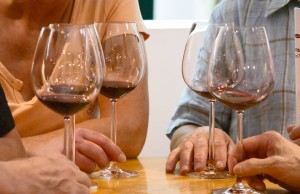 To have a “coup de cœur” in French means that you instantly fall in love with something, it could be anything, for instance a wine.
To have a “coup de cœur” in French means that you instantly fall in love with something, it could be anything, for instance a wine.
In the wine competition “Coup de Cœur des femmes journalistes” female journalists are supposed to find their coup de coeur among award-winning wines made by some of the many co-operatives in Languedoc-Roussillon.
I was one of the journalists in the jury and at the beginning of June we all gathered in Limoux in the beautiful south-western part of Languedoc to meet representatives from the coops and to taste their wines.
This was the 17th “Coup de Cœur des femmes journalistes” so it is now a classic among wine competitions. And every year our mission is to select three “coup de coeur”, one for each colour, among 57 wines that were awarded a gold medal in the “Concours Régional des vins de la coopération”. This competition took place in March this year and 74 cooperatives competed with in total 542 wines.
I was in the rosé group and after having tasted through all wines, around 20, I was truly impressed by the quality of the wines. Of course they had all won gold medals but still, it is amazing how good a rosé wine can taste nowadays. I actually had 3 favourites but after discussions in the group I had to agree to another Coup de Coeur. But I liked that one as well.
First, the winners:
- Coup de Coeur, Rosé: Les Terrasses Cévenoles Rosé 2011, Le Cigalois
IGP Cévennes, 3.20 euro (consumer price) - Coup de Cœur, Red: Les Vignerons des Cers Portiragnes, In Vino Erotico Rouge 2010
IGP Coteaux du Libron, 5.70 euro - Coup de Cœur, White: Les Vignerons d’Alignan du Vent, Neffiès, Domaine des Montarels Chardonnay 2010
IGP Côtes de Thongue, 6.80 euro
My own personal favourites among the rosé wines:
- Moulin d’Eole, AOP Costières de Nimes, Rosé 2011, 4.20 euro
- Code Séduction, Syrah, IGP Pays d’Oc, Rosé 2011, Les Vignerons des Cers Portiragnes, 3.95 euro
- La Garrigue Rosé 2011, AOC Languedoc La Clape, La Vendémiaire, 4.90 euro
- Extrême Gris Rosé 2011, AOC Languedoc, Montpeyroux Cooperative Artisanale, 4.50 euro
“Together we are strong“ say the wine co-operatives
Wine cooperatives are strong in France and especially in Languedoc-Roussillon where you find 70 % of them. Here are some interesting figures from the Fédération des Vignerons Coopérateurs Languedoc-Roussillon (Languedoc-Roussillon accounts for approximately 35 % of the total production of wine in France):
- 210 cooperatives
- 20 000 members
- 5400 employees
- 1200 million euro in turnover
- 174 000 hectares of vines (70 % of the total surface of vines in Languedoc-Roussillon)
- 11 million hectolitres of wine (75 % of total volume)
Wine events calendar
Send us an email if you have some event you want on the calendar.
Don’t be an egoist! Share with your friends and other wine enthusiasts! Forward the Brief to your friends! Suggest that they sign up for a free subscription !
© Copyright BKWine







